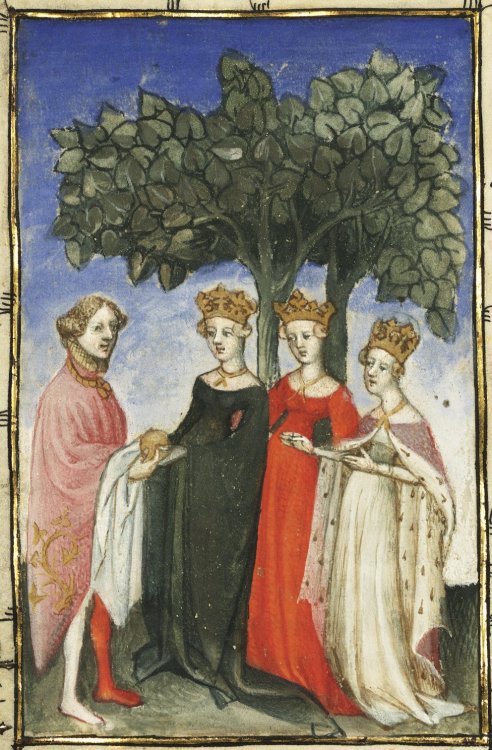So we've talked a lot in this series of articles about medieval art and how to draw it. But if there is one, and only one thing you can do that will instantly make the people you draw look like they belong in a manuscript, it is this.
And the best way to illustrate what I am talking about (pun intended) is to start with the women.
I've mentioned before on this blog, often, how breasts are not really a 'thing' in medieval art.
In the modern mindset, they certainly are. It's all about T&A and hourglass shaped women lounging on fast cars. Beautiful women nowadays are portrayed with the breasts thrust out, but you will pretty much never see this in medieval illumination.
So, if T&A wasn't the 'thing,' what was?
The most common pose for women in medieval manuscripts is what I call the "S" pose. Their hips are forward, emphasizing their belly area, their shoulders are back, de-emphasizing their breasts. Often their heads and faces are tilted a little forward and down. If you draw the line of the spine from the tip of the head to the hem of the skirt, you end up with an elongated "S" shape.
 |
| "Book of the City of Women" by Christine de Pizan, France, c. 1410-c. 1414 |
Everybody's Doing it!
And before you say "these women are all wearing houppelandes... houppelandes emphasize the belly anyway...":
 |
| 1300’s, Manes Codex |
 |
| Le Roman de la Rose ca.1380 France |
Seriously, it's a thing.
 |
| The Cloisters Playing Cards South Netherlandish, Burgundian territories, ca. 1475–80. |
Even this lovely playing card. Even though The Queen of Nooses is standing mostly straight, and has a nice rack, the S-curve is still clearly there.
 |
15th century France, BnF, fol. 34v
|
Another group of lovely ladies showing the phenomenon from the other side.
Projecting Authority
So how about the men? Well in general men get a lot more variety of poses in medieval manuscript, but if there is one pose that you can put a man into that immediately screams 'middle ages' it's what I call the 'sitting square:'
 |
| Old English Hexateuch (11th century) |
You see kings and other important people in this pose an awful lot, often holding a sword, or a staff and orb of office. It immediately projects authority. It is also rather ridiculously easy to draw since it's front on and the emphasis is on the torso. You basically draw a square or a rectangle, and stick the head, hands, and feet on like an afterthought. Granted, since men get a more robust variety of poses, this is more a thing with early period illumination.
 |
| 'Laws of Hywel Dda,' National library of Wales |
 |
| King John presenting a church, painted c. 1250–1259 by Matthew Paris in his Historia Anglorum |
 |
| David Proclaimed King, Psalter, England, ca. 1225, The Morgan Library & Museum |
Maybe with some bumps for the knees.
So there we go, some poses you can use to draw figures in distinctly medieval ways.
Fini
And if you are still reading, thank you for sticking through all seven parts of my "Pointy End goes on the Paper" Class. I hope that it has left you with some useful hints and tricks to speed you on your exciting journey into the illuminated arts.
...









Comments
Post a Comment